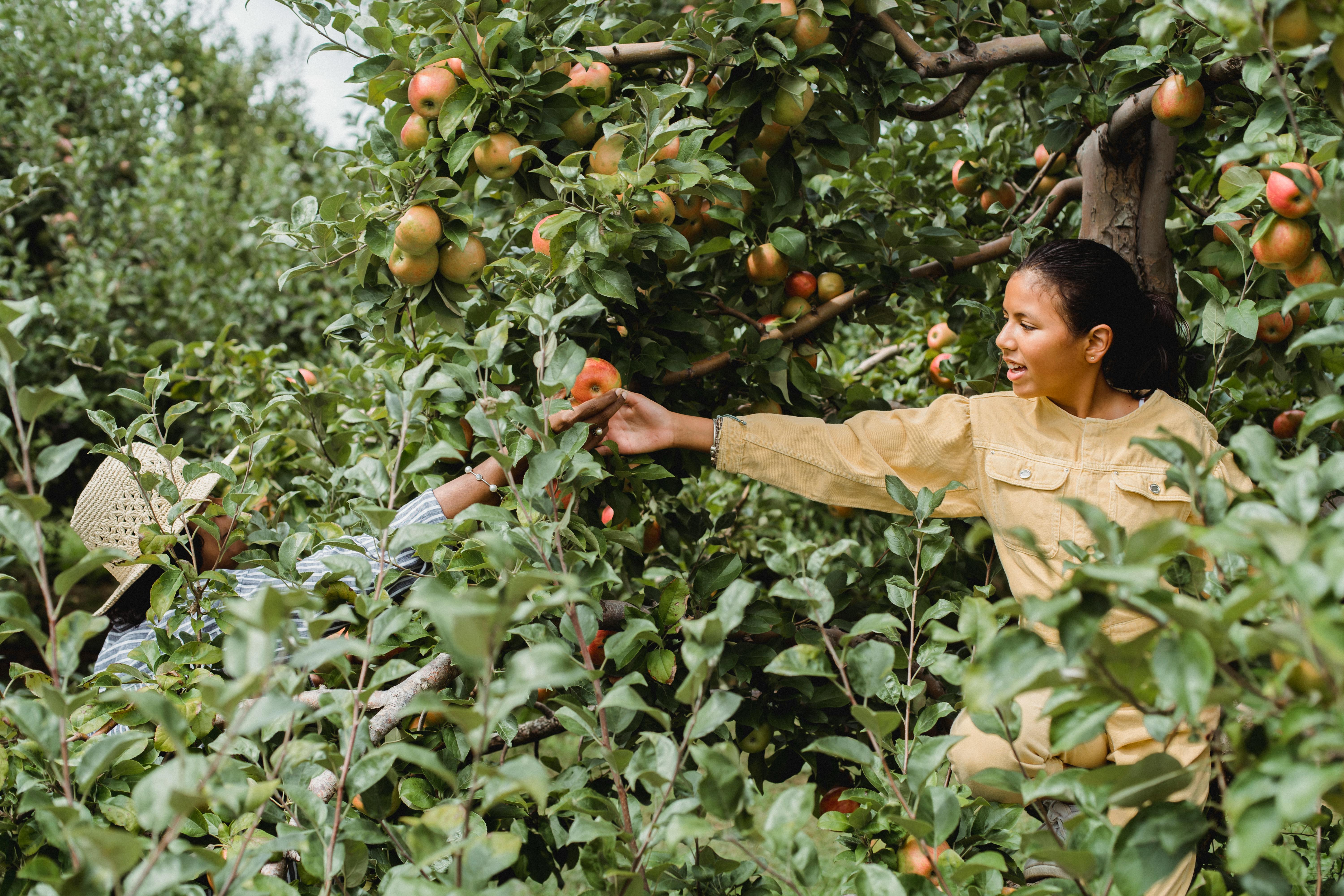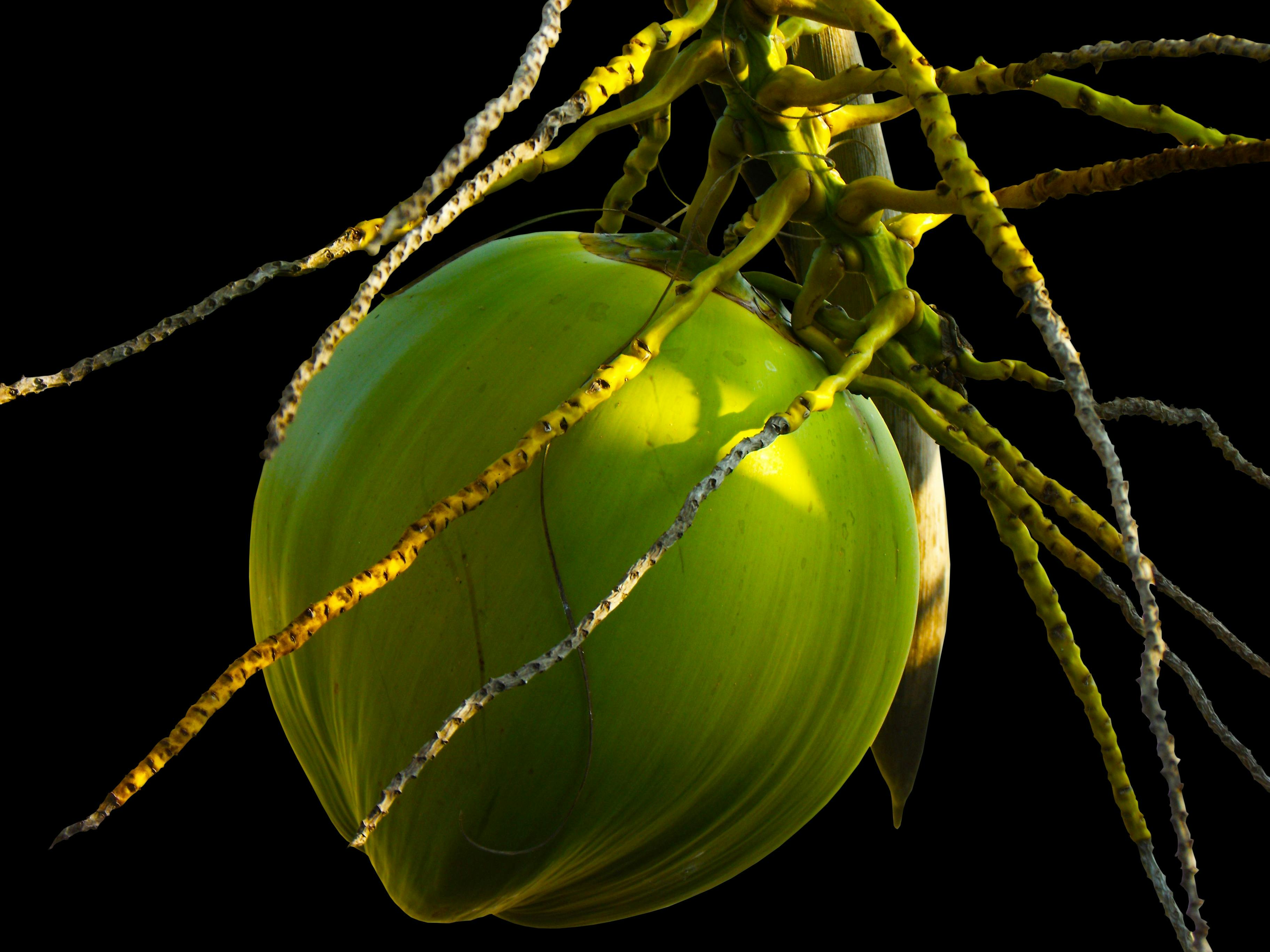Varieties of Fruits Grown on Palm Trees
Palm trees are an important source of fruits for many regions around the world. The fruits produced by palm trees come in a variety of sizes, colors, and shapes, with some being more popular than others. Common varieties include dates, coconuts, sago, betel nut, and açaí berries. Dates are one of the most popular and widely consumed fruits from palm trees. Dates come in a range of sizes and colors from yellow to reddish-brown. They have a sweet flavor that makes them a favorite snack for many people around the world. Coconuts are another popular fruit from palm trees that can be eaten raw or used to make coconut milk or oil. Coconuts grow in tropical climates and are beloved for their sweet taste and versatility. Sago is another fruit that grows on palm trees and is commonly used to make desserts or as an ingredient in savory dishes. Betel nut is a small nut-like fruit with an intense flavor that is often chewed as a stimulant in some parts of Asia. Finally, açaí berries are a type of dark purple berry grown on certain types of palms that is known for its high antioxidant content and is often added to smoothies or other health drinks.No matter what type of fruit you’re looking for, chances are there’s at least one variety grown on palm trees that will satisfy your taste buds. From sweet dates to tart açaí berries, these fruits offer something for everyone. If you live near or visit areas where palms grow, be sure to take advantage of the delicious fruits they offer!
The Benefits of Fruits Grown on Palm Trees
Palm trees are an important part of many tropical ecosystems. They provide food, shelter, and shade for animals and humans alike. Not only that, but they also produce a variety of delicious fruits that can be enjoyed by people all over the world. From coconuts to dates, the fruits grown on palm trees offer a wide range of health benefits.Coconuts, in particular, are a great source of healthy fats and minerals. They are high in fiber and contain antioxidants that help protect against cardiovascular disease and certain types of cancer. Coconut water is also a great way to stay hydrated while providing electrolytes like potassium and magnesium.
Dates are another type of fruit grown on palm trees that offer numerous health benefits. They are an excellent source of dietary fiber, vitamins, minerals, and antioxidants. Dates contain valuable amounts of iron which is important for healthy red blood cells and energy levels. The fiber found in dates helps regulate digestion as well as promote healthy weight management.
Palm fruits also have anti-inflammatory properties due to their high content of polyphenols. These compounds are thought to help reduce inflammation in the body which can improve overall health and wellbeing. The monounsaturated fats found in palm fruits can also help lower cholesterol levels which reduces the risk for heart disease.
In addition to providing numerous health benefits, palm fruits are also incredibly delicious! Whether you enjoy them fresh or dried, these sweet treats make a great snack or dessert option for people looking to satisfy their sweet tooth without overindulging in unhealthy snacks or desserts.
The benefits of fruits grown on palm trees make them an ideal choice for people looking to improve their overall health and wellbeing. Not only do they provide essential vitamins and minerals needed for good health, but they also offer anti-inflammatory properties that can help reduce the risk for certain diseases and conditions. And with their delicious taste, these fruits make it easy to enjoy a healthier lifestyle!
Identifying Fruits Grown on Palm Trees
Palm trees are a type of tropical tree that produce a variety of fruits, from coconuts to dates. While it is easy to identify coconuts and dates, other fruits produced by palm trees can be more difficult to identify. To help you identify the fruits grown on palm trees, here are some tips and tricks.First, look for the shape of the fruit. Fruits produced by palm trees come in a variety of shapes and sizes, from round to oval to long and thin. Look for the unique shape of each individual fruit to help you identify it.
Next, look at the texture and color of the fruit. The skin of some fruits can be smooth or have ridges or bumps. The color can range from yellow to orange to red, depending on the type of fruit it is. Look closely at these characteristics to help you determine which type of fruit it is.
Finally, pay attention to where the fruit is located on the tree. Some fruits are found near the top of the tree while others are located further down or around its trunk. This can be an important clue in helping you identify what type of fruit it is.
By following these tips and tricks, you should be able to easily identify different types of fruits grown on palm trees. With a little bit of practice and patience, you can learn how to identify even the most uncommon types of palm tree fruits.
Planting Requirements
Fruit trees on palm trees require special planting requirements. The most important factor is soil and drainage. The soil should be well-draining, light and airy, and slightly acidic. It should also be free of harmful chemicals, such as phosphates or nitrogen fertilizers, which can damage the roots of the tree. Additionally, if possible, plant the tree in a location that receives plenty of sun and has protection from wind and strong storms.Growing Requirements
Fruit trees on palm trees also need specific growing requirements in order to produce a healthy crop. Fertilizer should be applied regularly to ensure that the soil remains nutrient-rich. Additionally, pruning should be done to remove any dead or diseased limbs and encourage new growth. Lastly, regular watering is essential for optimal growth; however, it is important to avoid over-watering as this can lead to root rot or other diseases.
Care and Maintenance Tips for Fruits Grown on Palm Trees
Fruits that are grown on palm trees require special care and maintenance to ensure that the tree is healthy and the fruit is of good quality. Here are some tips to help you get the most out of your palm tree fruits:Watering: During the growing season, it is important to water your palm trees regularly. Make sure that the soil is moist but not soggy. Overwatering can lead to root rot, which can be fatal to your trees.
Fertilizing: Fertilize your palm tree fruits twice a year with a balanced fertilizer. It is important to use a fertilizer that has been specifically designed for palms. Avoid fertilizers with too much nitrogen as they can burn the roots of the trees.
Pruning: Prune your palm tree fruits regularly to ensure that they remain healthy and free from disease. Make sure you remove any dead or diseased branches as soon as possible in order to prevent further damage.
Harvesting: When it comes time to harvest your palm tree fruits, make sure you pick them at the right time. If you pick them too early, they may not be ripe yet; if you pick them too late, they may be overripe and not as flavorful.
Storage: Proper storage is essential for maintaining freshness in your palm tree fruits. Keep them in a cool, dry place until you are ready to eat or use them in recipes.
Does Rice Grow on Palm Trees?
Many people wonder, “Does rice grow on palm trees?” In reality, rice is a grain that grows in paddy fields, not on palm trees. Interestingly, while discussing rice, a common question arises: is rice considered a fruit? Botanically, rice is classified as a grain, distinct from fruits like coconuts.
Common Diseases Affecting Fruits Grown on Palm Trees
Palms are a type of tree that produce a variety of fruits, and many people enjoy growing them in their gardens. However, like all plants, palms can be susceptible to disease and pests. Common diseases that affect fruits grown on palm trees include bacterial spot, cold-induced fruit drop, and anthracnose.Bacterial spot is caused by the bacteria Xanthomonas campestris pv. cocotiphila and is most common in warm climates. Symptoms of bacterial spot include circular spots on the leaves and fruit that are initially yellow but can turn brown over time. To help prevent bacterial spot, it is important to practice good sanitation when pruning or harvesting fruits from your palms.Cold-induced fruit drop is caused by sudden drops in temperature which can damage the developing fruit and cause them to drop prematurely. To prevent cold-induced fruit drop, it is important to protect your palms from frosty nights with blankets or tarps when possible. It is also important to provide adequate water for your palms during times of extreme temperatures as this will help keep them healthy and resistant to disease.Anthracnose is a fungal infection caused by the fungus Colletotrichum gloeosporioides which can cause lesions on leaves, flowers, stems, and fruits of palm trees. Symptoms of anthracnose include dark lesions or spots on the leaves or fruits that may be accompanied by yellowing or wilting of the foliage. The best way to prevent anthracnose is to avoid overhead irrigation or wetting foliage and instead water at the base of the tree so that there is less moisture available for fungal growth. Additionally, it is important to remove any infected leaves as soon as possible so as not to spread the disease further throughout your garden.In conclusion, there are several common diseases affecting fruits grown on palm trees including bacterial spot, cold-induced fruit drop, and anthracnose. It is important for gardeners to practice good sanitation techniques when pruning or harvesting their palms in order to help prevent these diseases from occurring. Additionally, protecting your palms from extreme temperatures and avoiding overhead irrigation will also help reduce the risk of disease development in your garden.
Harvesting Palm Fruits
Harvesting palm fruits requires careful attention and specific timing. Most palm fruits are ready to be harvested when they turn a deep yellow or orange color, depending on the variety. The fruit should be left on the tree until it is fully ripe to ensure optimal flavor and sweetness. If the fruit is picked too early, it will not have the same quality as if it were left to ripen on the tree for longer. It is important to note that some varieties of palms may require additional time to ripen before they are ready for harvesting. For this reason, it is important to be familiar with the particular variety of palm tree one is harvesting from in order to know when it is ready for harvest.Storing Palm Fruits
Once harvested, palm fruits should be stored properly in order maintain their quality and flavor. Depending on the variety, they can either be stored at room temperature or refrigerated. It is important to store them away from direct sunlight or heat sources as this can cause them to deteriorate quickly. When storing at room temperature, place them in an airtight container or bag and consume within a few days of harvest. When refrigerating, keep them in a sealed container or bag and consume within one week of harvest. It is also important to note that certain varieties may have longer shelf lives when stored properly.Overall, harvesting and storing palm fruits can be a challenging but rewarding experience if done correctly. Knowing when and how to harvest and store each variety of palm fruit will help ensure that one gets the most out of their crop while preserving its quality and flavor for as long as possible.

Conclusion
Palm trees are one of the most iconic trees in the world. Not only are they beautiful and majestic, but they also produce some of the most delicious fruits. From coconuts and dates to acai berries and wild bananas, there is a wide variety of fruit that grows on palm trees. These fruits are incredibly nutritious and contain important vitamins and minerals that can help support healthy lives. While some palm trees can be found growing in tropical climates, many species can survive in cooler temperatures as well. So no matter where you live, you can enjoy the mouth-watering fruit that grows on palm trees!Overall, palm trees are not just aesthetically pleasing, but can also provide us with nutritious fruits that can help support a healthy lifestyle. Whether you live in a tropical climate or somewhere cooler, there are plenty of varieties of palm tree fruit to enjoy!



